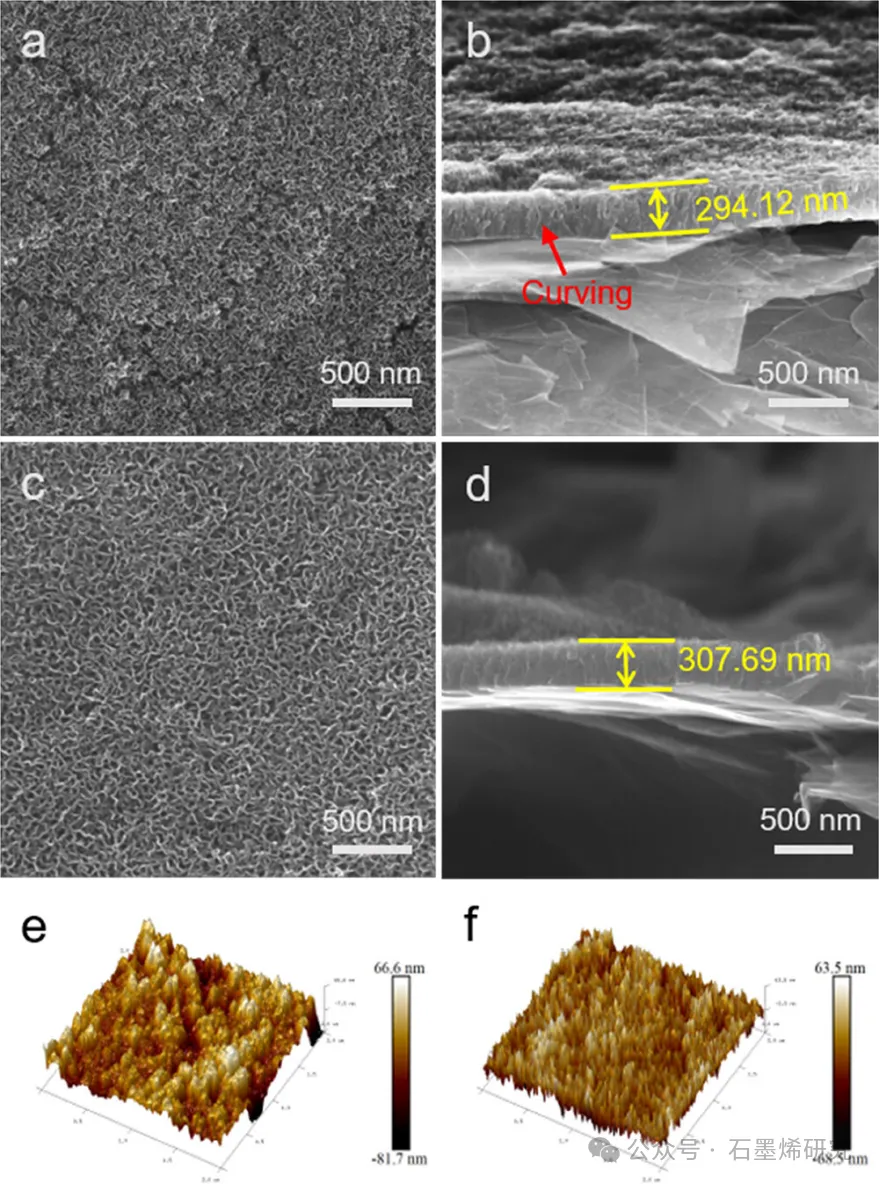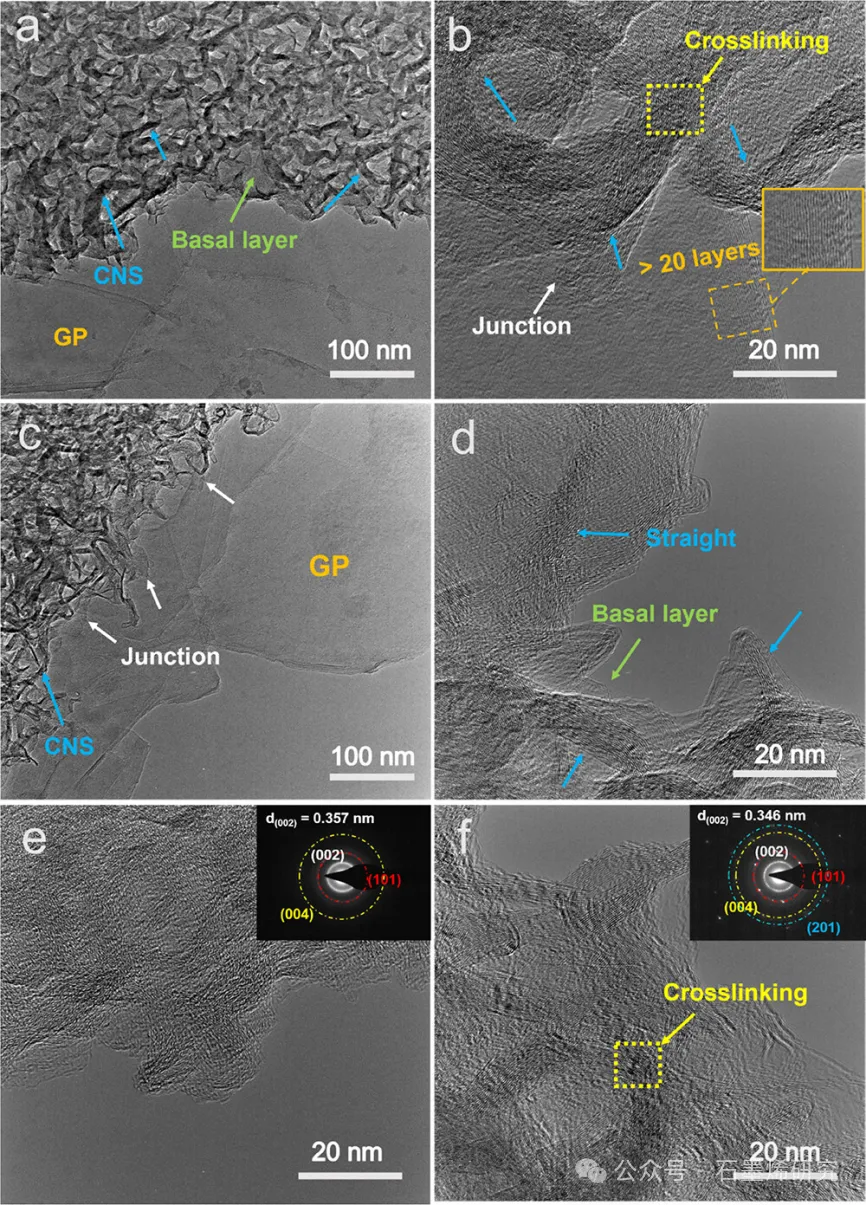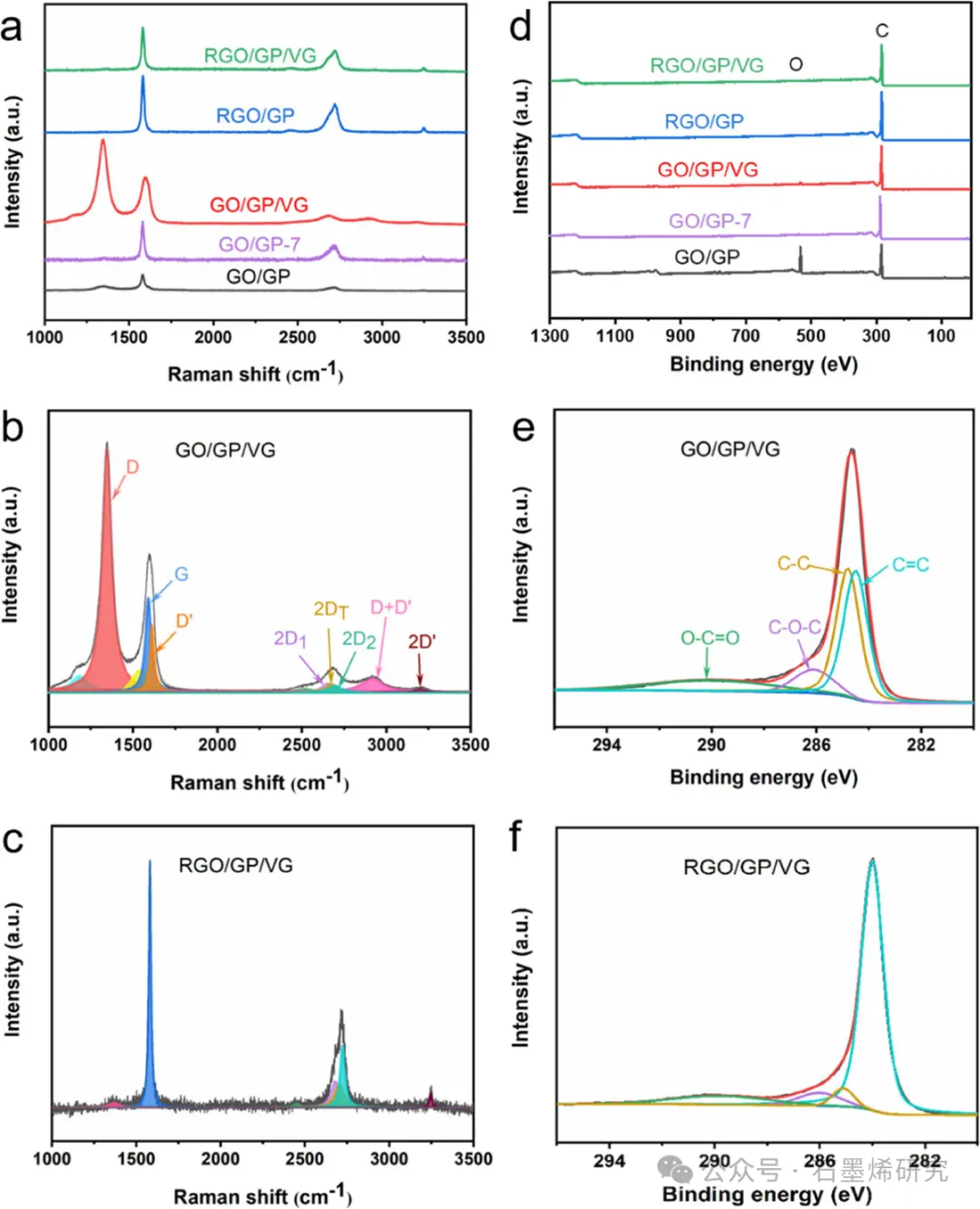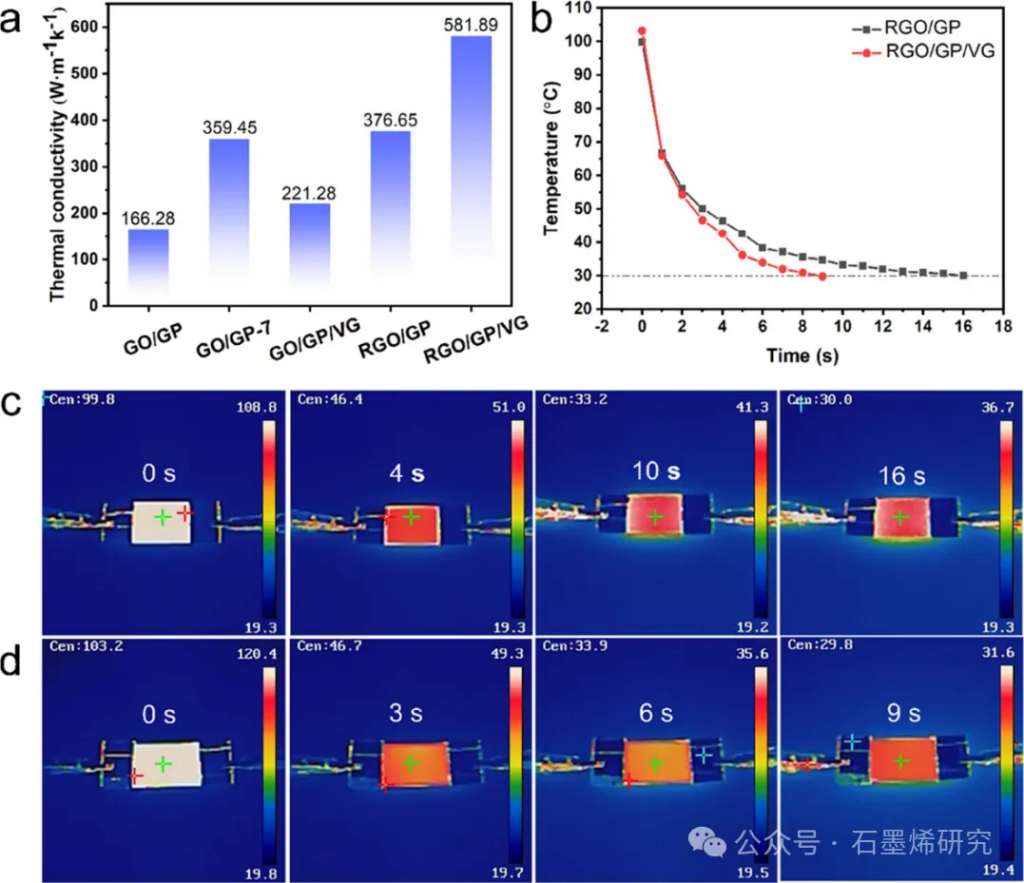Vertical Graphene on Graphene Composite Film for Heat Dissipation and Electromagnetic Shielding
Graphene films, while costly, have extensive applications in the electronics field. Mechanical exfoliation is an economical and effective method for producing graphene (GP), but the weak interconnections between layers can negatively impact film performance. To address this issue, a small amount of graphene oxide (GO) was added to the GP dispersion, which was then vacuum-filtered, dried, and pressed into a GO/GP film. Subsequently, vertical graphene (VG) was grown in situ on the surface of the GO/GP film using inductively coupled plasma-enhanced chemical vapor deposition (ICP-PECVD) technology, followed by graphitization to create reduced graphene oxide/graphene/vertical graphene (RGO/GP/VG) composite films.
The results show that the thermal conductivity of the RGO/GP/VG composite film is 581.89 W m⁻¹K⁻¹, a 54.5% increase compared to the graphitized RGO/GP film (376.65 W m⁻¹K⁻¹), with a total thickness of approximately 24 μm. The composite also exhibits good conductivity and electromagnetic shielding effectiveness, achieving 1556.01 S cm⁻¹ and 60.40 dB, respectively. The structural evolution of VG during the graphitization process and its impact on the dual functionality of the GP film were studied in detail. The improved performance of the RGO/GP/VG composite film indicates that the synergistic effects of in situ VG growth and graphitization lead to more consistent thermal and electrical pathways.
Figures:

- Figure 1: Preparation process of the composite film.

- Figure 2: (a, b) SEM images of GO/GP/VG. (c, d) SEM images of RGO/GP/VG. (e) AFM image of GO/GP/VG. (f) AFM image of RGO/GP/VG.

- Figure 3: (a) Bright field TEM image of GO/GP/VG. (b) Bright field TEM image of RGO/GP/VG. (c, e) HRTEM images of GO/GP/VG. (d, f) HRTEM images of RGO/GP/VG. (Insets in figures 3e, f show selected area electron diffraction patterns.)

- Figure 4: (a) Raman spectra of the films. (b) Fitted Raman spectrum of RGO/GP/VG. (c) XPS photoelectron spectrum of the films. (e) Fitted XPS photoelectron spectrum of GO/GP/VG.

- Figure 5: (a) Diffuse reflectance spectra of the films. (b, c) XRD patterns of the films. (d, e) Structural evolution of VG during graphitization.

- Figure 6: (a) Thermal conductivity of the films. (b) Time-temperature heat dissipation curves of the films. (c) Infrared thermal image of RGO/GP film during heat dissipation. (d) Infrared thermal image of RGO/GP/VG film during heat dissipation.

- Figure 7: (a) Conductivity of the films. (b, c) Electromagnetic shielding effectiveness of the films. (d) Electromagnetic shielding power coefficient of the films. (e) Mechanism of electromagnetic shielding in the films.
The related research findings were published by the Mingyu Zhang research group at Central South University in 2024 in ACS Applied Nano Materials (link: https://doi.org/10.1021/acsanm.3c05864).
Original Article: Vertical Graphene on Graphene Composite Film for Heat Dissipation and Electromagnetic Shielding.

